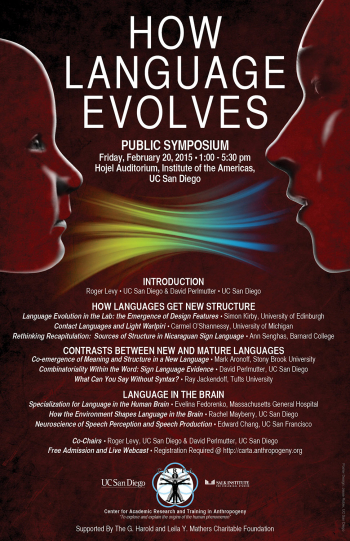How Language Evolves
Roger Levy, Massachusetts Institute of Technology
David Perlmutter, University of California, San Diego
This symposium addresses the question of how human language came to have the kind of structure it has, focusing on three sources of evidence: 1) ways languages get new structure not present in the language of the previous generation(s) of speakers or signers; 2) what contrasts between new and mature languages reveal about how language evolves; and 3) neuroscientific investigations of functional specialization for language in the human brain and its dependence on the linguistic input the language learner gets during cognitive development.
Media for each talk can be played by clicking on icons in the table below, or by clicking on the individual talk titles below and then the attachment file at the bottom of the page.
| Speakers | Media | Session |
|---|---|---|
 Pascal Gagneux |
|
Welcome |
 Roger Levy |
|
Opening Remarks |
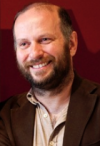 Simon Kirby |
|
Language Evolution in the Lab: The Emergence of Design Features The emergence of language has been called the most recent major transition in the evolution of life on earth. It gives our species the remarkable ability to accurately communicate entirely novel meanings using sequences of behaviors that are themselves entirely novel. Language enables this feat by virtue of a small set of structural design features that are rare or absent elsewhere in nature. How can we study the evolution of these design features of human language, and hence understand our... read more |
 Carmel O'Shannessy |
|
Contact Languages and Light Warlpiri Contact languages represent some of the ways that new languages can be created, as they systematically combine elements from more than one existing language, resulting in novel linguistic systems. When multiple sources provide input to a rapidly emerging new system, elements are likely to be reanalyzed, and new structural categories may be created that differ from those in the source languages. For example, Light Warlpiri, a newly emerged mixed language spoken in north Australia, combines... read more |
 Ann Senghas |
|
Rethinking Recapitulation: Sources of Structure in Nicaraguan Sign Language The emergence of a new sign language in Nicaragua provides a real-world opportunity to discover the relationship between individual language development and language creation. Nicaraguan Sign Language (NSL) is a young, urban sign language that emerged from within a community of deaf children initially brought together in an educational setting in the 1970s. Members of different age cohorts today represent a living “fossil record” of the language as it developed over the following four decades.... read more |
 Mark Aronoff |
|
Co-emergence of Meaning and Structure in a New Language About 20 new and young sign languages from around the world have been reported in the research literature. They have drawn interest because they provide a unique opportunity not available in spoken languages to study the spontaneous emergence of language within 1 to 3 generations. My research lab studies sign languages ranging from those that are new to those that are more established, having records of use dating from 200 or more years and now have primary users in the hundreds of thousands.... read more |
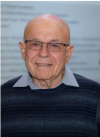 David Perlmutter |
|
Combinatoriality within the Word: Sign Language Evidence In human languages, spoken and signed, words or signs are products of combinatorial systems that combine meaningless smaller units in different ways to yield different words or signs with different meanings. In spoken languages those smaller units are the sounds of speech (phonemes). In sign languages, they are handshapes, movements, and the places on the body where signs are made. The question is how the combinatorial systems that combine them evolve.Word-internal combinatoriality evolved in... read more |
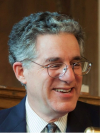 Ray Jackendoff |
|
What Can You Say without Syntax? A language can be thought of as a mapping between sound (or, in sign languages, gesture) and meaning (or concepts). In a developed language such as English, this mapping makes use of syntactic structure, in which words are categorized by parts of speech and words are combined in phrases such as Noun Phrase. Furthermore, a phrase can be made up of smaller phrases, so the structure can be highly hierarchical.This talk will explore forms of language with a much more limited organization, linear... read more |
 Evelina Fedorenko |
|
Specialization for Language in the Human Brain The human language system evolved against the backdrop of other, evolutionarily older systems. How does the language system fit with the rest of our mind and brain? Does it rely on specialized mechanisms, or does it instead make use of machinery that we use to perform other complex tasks? Using data from brain imaging investigations and studies of patients with brain damage, I will argue that a set of brain regions in the adult human brain is specialized for high-level language processing.... read more |
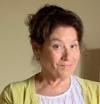 Rachel Mayberry |
|
How the Environment Shapes Language in the Brain Sign language is similar to spoken language in fundamental ways: their linguistic structure is similar, they are produced and comprehended in similar ways, and the language regions of the brain’s left hemisphere are responsible for language in both modalities. However, in a series of studies we have found that these statements are true only if the child experiences language used in the environment from birth. Because deaf children cannot hear the language spoken around them, and cannot see sign... read more |
 Edward Chang |
|
Neuroscience of Speech Perception and Speech Production A unique and defining trait of human behavior is our ability to communicate through speech. Our laboratory is interested in determining the basic mechanisms that underlie our ability to perceive and produce speech. While much of this processing has been localized to the peri-sylvian cortex, including Broca’s and Wernicke’s areas, the fundamental organizational principles of the neural circuits within these areas are completely unknown.To address this, our laboratory applies a variety of... read more |
 Fred Gage |
|
Wrap Up, Question and Answer, and Closing Remarks |
| Attachment | Size |
|---|---|
| 1.72 MB | |
| 1.69 MB | |
| 1.75 MB | |
| 282.49 KB | |
| 795.6 KB |
If you enjoy this event, please consider supporting CARTA's quest to explore and explain the human phenomenon.
